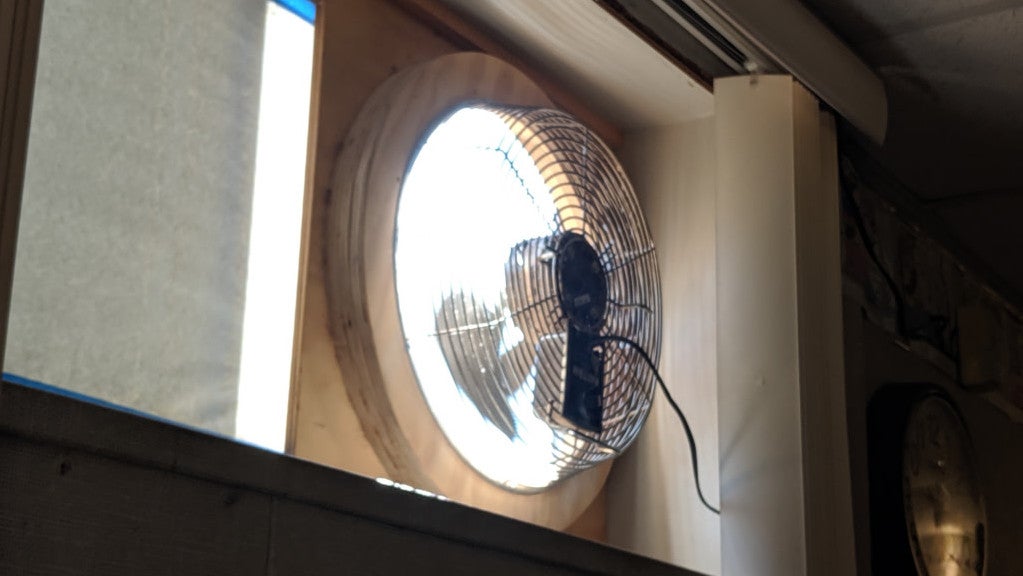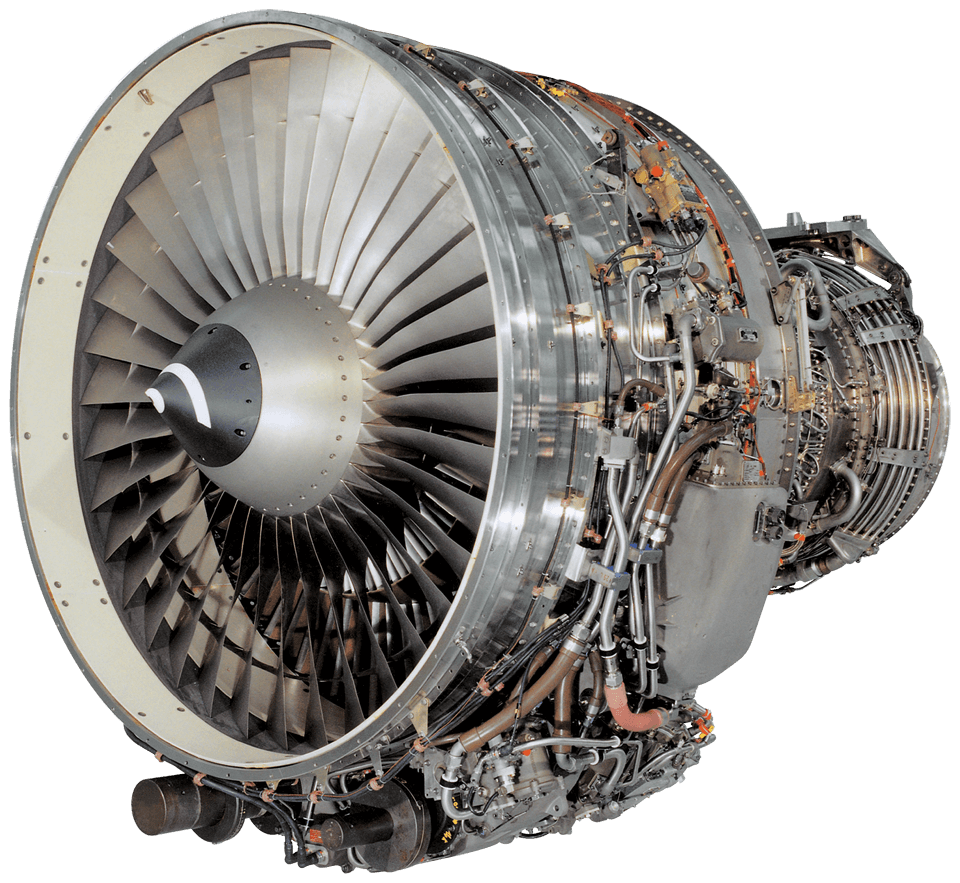 "Rusty Vandura - www.tinyurl.com/keepoppo" (rustyvandura)
"Rusty Vandura - www.tinyurl.com/keepoppo" (rustyvandura)
09/20/2019 at 18:01 • Filed to: None
 0
0
 16
16
 "Rusty Vandura - www.tinyurl.com/keepoppo" (rustyvandura)
"Rusty Vandura - www.tinyurl.com/keepoppo" (rustyvandura)
09/20/2019 at 18:01 • Filed to: None |  0 0
|  16 16 |

So here’s a 16-inch fan, a Patton “High Velocity” from fifteen or twenty years ago, when Patton fans weren’t noisy, inefficient pieces of doo-doo.
What do you think the likely CFM range might be on such a fan as this one?
 diplodicus forgot his password
> Rusty Vandura - www.tinyurl.com/keepoppo
diplodicus forgot his password
> Rusty Vandura - www.tinyurl.com/keepoppo
09/20/2019 at 18:26 |
|
Google the pn, probably a datasheet out there. Or get an anemometer then convert the ft/min reading to cfm
 Montalvo
> Rusty Vandura - www.tinyurl.com/keepoppo
Montalvo
> Rusty Vandura - www.tinyurl.com/keepoppo
09/20/2019 at 18:44 |
|
Is there a rated RPM on the fan?
 gmporschenut also a fan of hondas
> Rusty Vandura - www.tinyurl.com/keepoppo
gmporschenut also a fan of hondas
> Rusty Vandura - www.tinyurl.com/keepoppo
09/20/2019 at 18:58 |
|
Model number?
 Poor_Sh
> Rusty Vandura - www.tinyurl.com/keepoppo
Poor_Sh
> Rusty Vandura - www.tinyurl.com/keepoppo
09/20/2019 at 20:03 |
|
7
 merged-5876237249235911857-hrw8uc
> Rusty Vandura - www.tinyurl.com/keepoppo
merged-5876237249235911857-hrw8uc
> Rusty Vandura - www.tinyurl.com/keepoppo
09/20/2019 at 20:43 |
|
All of them. It’s got all of the CFMs.
 merged-5876237249235911857-hrw8uc
> Rusty Vandura - www.tinyurl.com/keepoppo
merged-5876237249235911857-hrw8uc
> Rusty Vandura - www.tinyurl.com/keepoppo
09/20/2019 at 20:44 |
|
Those are great fans. We had one years ago that would pull air like crazy through my childhood bungalow style home. Then it feel Down the stairs and had a bit of a wobble after that.
 Full of the sound of the Gran Fury, signifying nothing.
> Rusty Vandura - www.tinyurl.com/keepoppo
Full of the sound of the Gran Fury, signifying nothing.
> Rusty Vandura - www.tinyurl.com/keepoppo
09/20/2019 at 22:58 |
|
Sure - it’s a joint venture between GE Aircraft Engines and Snecma, now Safran. They make popular meet engines in the 20-30,000 lb thrust class, and have been the standard engine on the 737 since the -300, an optional engine on the A320 and used for retrofitting on the DC-8 sixty series as well as the KC-135.

Oh, that CFM. I dunno. But one of these buggers would definitely clear the air out of your attic (and might take a few shingles along the way...)
 Shoop
> Rusty Vandura - www.tinyurl.com/keepoppo
Shoop
> Rusty Vandura - www.tinyurl.com/keepoppo
09/21/2019 at 01:50 |
|
A box fan seems to draw about 1000 to 2000. So around 2000-3000
 Rusty Vandura - www.tinyurl.com/keepoppo
> Montalvo
Rusty Vandura - www.tinyurl.com/keepoppo
> Montalvo
09/21/2019 at 08:52 |
|
Not that I can discover.
 Rusty Vandura - www.tinyurl.com/keepoppo
> gmporschenut also a fan of hondas
Rusty Vandura - www.tinyurl.com/keepoppo
> gmporschenut also a fan of hondas
09/21/2019 at 08:52 |
|
Unknown.
 Rusty Vandura - www.tinyurl.com/keepoppo
> merged-5876237249235911857-hrw8uc
Rusty Vandura - www.tinyurl.com/keepoppo
> merged-5876237249235911857-hrw8uc
09/21/2019 at 08:58 |
|
This one is in the window of my classroom. The room is a “portable” with almost nothing in the way of windows, though it does have air conditioning that I can control myself. This fan I bought for our home brand new twenty years ago and even then, it cost around $70 as I recall. Here, I’ve modified it for ventilation duties. I’ve been looking at other ventilator fans, like pot farm fans and the like, squirrel cages, duct fans, and so on.
 Rusty Vandura - www.tinyurl.com/keepoppo
> Full of the sound of the Gran Fury, signifying nothing.
Rusty Vandura - www.tinyurl.com/keepoppo
> Full of the sound of the Gran Fury, signifying nothing.
09/21/2019 at 08:59 |
|
Expensive to maintain, though, and kerosene fumes... And given that it’s installed in my classroom, the kids might have some difficulty hearing me blather...
 Snuze: Needs another Swede
> Rusty Vandura - www.tinyurl.com/keepoppo
Snuze: Needs another Swede
> Rusty Vandura - www.tinyurl.com/keepoppo
09/22/2019 at 08:59 |
|
I did some HVAC engineering on ships for a while, but they always use ducted fans. Its hard for me to draw a lot of comparisons because flow in free space is way different than flow in a tube.
 Rusty Vandura - www.tinyurl.com/keepoppo
> Snuze: Needs another Swede
Rusty Vandura - www.tinyurl.com/keepoppo
> Snuze: Needs another Swede
09/22/2019 at 13:26 |
|
I'm just hoping for a point of comparison. There are crappy Lasco box fans out there that claim 1,000 cfm and I'm LOL.
 RacinBob
> Rusty Vandura - www.tinyurl.com/keepoppo
RacinBob
> Rusty Vandura - www.tinyurl.com/keepoppo
09/23/2019 at 13:40 |
|
Hmmmm, this is a surprisingly difficult question. 1st, I would guess it might be a 1000 cfm. A typical furnace is between 1200 to 1600 CFM and I doubt a window fan exceeds that.
But it gets harder because what makes prop fans different than centrifugal fans is they have a real problem with resistance to flow. Example; I bet there is a screen on the other side of the fan. If yes, I expect flow is cut in half to maybe 500.
Also, remember you cannot blow air out of a closed box. So what is the pressure drop of getting air into the space? Every CFM has to come from someplace. If the space is tight, nothing gets in, nothing goes out....
What I expect is in a lot of cases, a prop fan like that makes a lot of noise but doesn’t blow more than 100 CFM.
 Rusty Vandura - www.tinyurl.com/keepoppo
> RacinBob
Rusty Vandura - www.tinyurl.com/keepoppo
> RacinBob
09/23/2019 at 15:54 |
|
What I expect is in a lot of cases, a prop fan like that makes a lot of noise but doesn’t blow more than 100 CFM.
I’m not engineer, but that would be my assumption. Especially with crappy box fans.